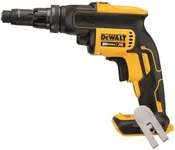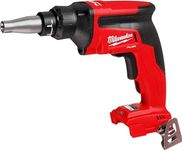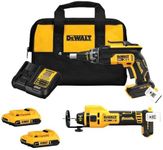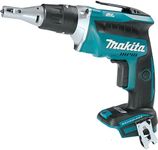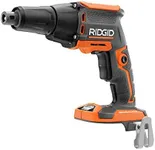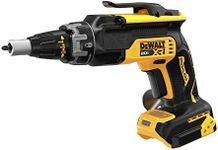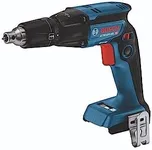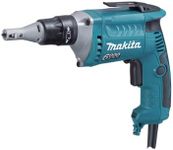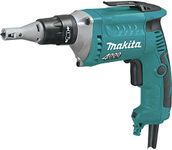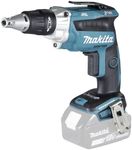Buying Guide for the Best Drywall Screw Gun
Choosing the right drywall screw gun can make your drywall installation process much smoother and more efficient. A drywall screw gun is a specialized tool designed to drive screws into drywall quickly and accurately. When selecting a drywall screw gun, it's important to consider several key specifications to ensure you get the best fit for your needs. Understanding these specs will help you make an informed decision and choose a tool that will serve you well for your specific projects.Speed (RPM)Speed, measured in revolutions per minute (RPM), indicates how fast the screw gun can drive screws. This is important because higher speeds can make the job faster, but may be harder to control for beginners. Lower speeds offer more control but can slow down the process. Generally, speeds range from 2,500 to 6,000 RPM. For most DIY projects, a mid-range speed of around 4,000 RPM is a good balance between speed and control. Professionals might prefer higher speeds for efficiency.
TorqueTorque is the force that the screw gun applies to drive screws into the drywall. Higher torque is necessary for driving screws into harder materials or thicker drywall. Torque is usually adjustable on most screw guns, allowing you to set it according to the material you're working with. For standard drywall, moderate torque settings are sufficient. If you plan to work with thicker or more resistant materials, look for a screw gun with higher torque capabilities.
WeightThe weight of the screw gun affects how comfortable it is to use, especially for extended periods. Lighter models are easier to handle and reduce fatigue, making them ideal for DIYers or those working on smaller projects. Heavier models might offer more power and durability, which can be beneficial for professional use. Consider how long you'll be using the tool and choose a weight that you can comfortably manage.
ErgonomicsErgonomics refers to how comfortable and easy the screw gun is to use. Features like a comfortable grip, balanced weight distribution, and easy-to-reach controls can make a big difference in reducing strain and increasing efficiency. Look for models with ergonomic designs if you plan to use the tool frequently or for long periods. Testing the grip and feel of the screw gun before purchasing can help ensure it fits well in your hand.
Corded vs. CordlessDrywall screw guns come in both corded and cordless models. Corded screw guns offer consistent power and are generally lighter since they don't have a battery. However, they require access to an electrical outlet and can be less convenient to maneuver. Cordless models offer greater flexibility and portability, making them ideal for working in areas without easy access to power. They are typically heavier due to the battery and may require recharging. Choose based on your work environment and preference for mobility.
Depth AdjustmentDepth adjustment allows you to control how deep the screw is driven into the drywall. This is crucial for achieving a smooth, professional finish without damaging the drywall. Most screw guns have an adjustable depth setting, which can be fine-tuned to match the thickness of the drywall and the type of screws being used. For beginners, a screw gun with easy and precise depth adjustment is recommended to avoid over-driving or under-driving screws.
Auto-Feed FeatureAn auto-feed feature automatically loads screws into the gun, allowing for faster and more efficient work. This is particularly useful for large projects where you need to drive many screws in a short amount of time. While this feature can add to the cost of the screw gun, it can significantly speed up the process and reduce manual effort. If you frequently work on large-scale drywall installations, an auto-feed screw gun can be a valuable investment.
